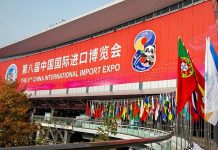By Ajmal Khan Yousafzai
Pakistan and India are head to head since the recent confrontation, the situation is drastic. India divided Jammu and Kashmir, first by provoking the special constitutional status and then dividing it into parts, as this was done with evil plans to convert Muslim majority into minority. Pakistan has put all its efforts to counter their current actions of changing Kashmir status, as in Khan concluding speech at the United Nations stage, he categorically said that “we will go to any extent if world don’t take responsibility for the Indian brutalities in Indian occupied Kashmir.” This shows, that the meter is at a boiling point on both side, one wishes to annex territory, the other however points towards the social injustice in Kashmir valley.
This year, I had to write my Master’s thesis and the time was very crucial as it was the time when Kashmir was once again witnessing suppression with the hands of Indian Armed Forces. Therefore, the humanitarian element appealed, and I decided to do my research on Kashmir conflict. Within the research process, I went thoroughly through all aspects, most importantly the history of Kashmir and the long standing realities of the dispute. It felt like, somehow I was going through seven decades of ups and downs, miseries and chaos. I must admit that the Kashmiri people have endured both physically and psychologically torments. Whereas, the Indians somehow became blind to their own excessive acts which astringent the local population. Also, the politicians and ordinary public were left ignorant to the historic facts which let them to never consider the local Kashmiri aspiration for their own future and self determination. Furthermore, the establishment thought that if they could somehow fabricate Kashmir history into their own desires, the general public will never get to the realities on the ground. But in this age of technology, no matter how hard one tries to concoct facts, others are always there to reveal the truth.
There are some books that could provide better understanding of the dispute and Indian blindness towards the harsh treatment of Kashmiris and their tactics to silent the voices for self determination. The books include, “India, Pakistan and the Kashmir Dispute” (1994), “Kashmir: A Disputed Legacy, 1984-1990”, “Kashmir, 1947: Rival versions of History”, “Kashmir Conflict (2003)”, “Hindu Nationalism and Indian Politics (2008)”, “Subalterns and Raj: South Asian since 1600 (2007)”, and “Nuclear Proliferation in the Indian Subcontinent: The Self-Exhausting “Superpowers” and Emerging Alliances (2000)”.
Just to provide a statistical picture to show the magnitude of the Kashmiris’ miseries, some statistics are as followed, Aljazeera states that within 1989 and 2017, the number of deaths counted to 70,000, whereas, the Hindustan times an Indian newspaper states that the deaths are 41,000 in the past 27 years. Still, if one takes their own statistics of the people deaths in Kashmir, it should be remembered that this is 41,000 families and each family could be consist of numbers ranging from 2 to 10. With an average of 5 persons per family, the numbers reaches to 205,000. Therefore, it can be said that one person suffers physical pain while his/her family suffers both physical and psychological pains. I tried to picture their hopelessness and came to the conclusion that I need to take part to help and ease their sufferings, from that moment I took the path of Peace Journalism and completed my thesis; converted into research paper.
My first research paper has been published; it investigates the media treatment of Kashmir conflict between India and Pakistan. The Johan Galtung’s popular Model of Peace Journalism has been applied. Moreover quantitative data has been analyzed. The results were astonishing, as the media plays an important role in educating public, thus it was crucial to examine media for their coverage of Kashmir conflict. the data revealed that the media is hugely war oriented and only focus on the visible elements such as the death, destruction whereas ignore the invisible indicators, in other words the media only focus on the stats and number, quotes physical destruction while ignores psychological. Many researchers believe that Media by default cover conflicts in war approaches, creating hype and focusing on the visible effects, same was the case in my study and now I too believe in this statement.
Therefore, I must propagate the potential of Galtung’s PJ Model which encourages and provides guidelines to use peace oriented approaches in the coverage of conflicts. His studies have provided a two dimensional path for media, on one side it explains what war oriented news coverage means and how it harms the viewers perception on the matters and on the other side it provides peace oriented news coverage which focuses on filling the gap and becoming the bridge in resolving the dispute and giving space to all concern parties, becoming the voice of the voiceless.
The author is a staff member and can be reached at khanaj965@gmail.com



